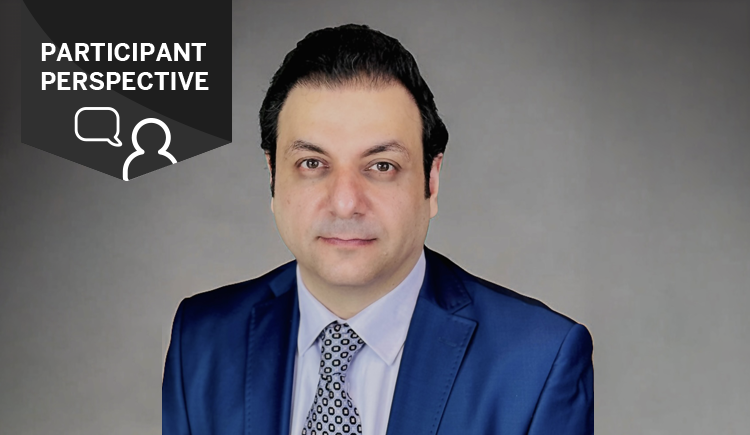
Delivering quality and safety in the health care setting is essential to achieving the best patient outcomes, especially in the surgical suite. In recent years, there has been increasing awareness of the need for clinicians to integrate quality and safety measures into their day-to-day activities. The American College of Surgeons has also made it a priority for surgeons to ensure quality and safety in all of their efforts since surgical procedures and preoperative and postoperative care can pose many opportunities for errors to occur if everyone is not on the same page.
Yet, while most surgeons have extensive technical training, many have not formally learned the soft skills they need to effectively lead multidisciplinary teams to optimize performance and outcomes while minimizing risk, according to Sayeed Malek, MD, FACS, clinical director of transplant surgery at Brigham and Women’s Hospital and assistant professor of surgery at Harvard Medical School (HMS). Malek also serves as program director for the HMS Surgical Leadership Program, a one-year certificate program designed to train surgeons to be more effective leaders and to strengthen their executive skills in new ways.
Exploring Different Leadership Styles
Malek points out that leadership development training is essential to improve the safety and effectiveness of operative care.
“The patient must be at the center of the universe for surgeons, but training on how they can best accomplish that themselves and as part of a team has been lacking in many hospitals,” he explains. As a result, some health systems have been developing simulation training and other programs for surgeons to teach them how to work as a team with the patient at the center. To lead teams successfully also requires surgeons to develop a range of leadership skills, as well as to know how to use these skills best, adapt them to meet different circumstances, and understand how to get the best results.
“Individuals are naturally drawn toward various leadership styles and the one that fits best will be a personal choice,” Malek says. No one leadership style will fit all circumstances. Therefore, the most effective surgical leaders must cultivate their natural leadership style and adapt various leadership styles for different scenarios to lead their teams most effectively within and beyond the operating room.
Six Leadership Styles Surgeons Can Adopt
Malek points out that psychologist Daniel Goleman, PhD, and his colleagues define and describe six leadership styles in the book Primal Leadership: Learning to Lead with Emotional Intelligence. These styles, which are based on different components of emotional intelligence, can be a good starting point for surgeons looking to understand their natural style—and to have a range of other styles they can use when needed. Being familiar with and comfortable using all six of these styles interchangeably, depending on the situation, can prepare surgeons to achieve the best results.
- Coercive Leadership: In this style, the leader is in full charge of the situation and makes all of the decisions for the team. Although this can be discouraging for team members, who may feel less empowered and therefore disengaged when a leader dictates in this way, this style can be essential for a leader to pull out in a crisis when time is of the essence and everyone must work together to follow a tight, scripted plan. This style can also be necessary when there is a lot riding on the team’s actions with no room for error. Therefore, surgical leaders should know how—and when—to effectively use a coercive leadership approach when circumstances demand it.
- Authoritative Leadership: With an authoritative leadership style (not to be confused with an Authoritarian leadership style), the leader should have a clear vision of where they want things to go. They must know how to communicate that goal to their teammates so they can get on board and help support it. The leader shares their vision with the team and encourages input from team members, but the ultimate vision and the decision to reach that goal still rests with the leader.
- Pacesetting Leadership: In pacesetting leadership, leaders use their high standards to set the expectations for their team and lead them by example. For instance, when a surgeon is dealing with a particularly difficult or stressful situation, pacesetting can be helpful to guide the team and help the members stay motivated. Surgeons can also enlist high-performing colleagues to help set the pace and get everyone else to follow. The key to this style is to help everyone to stay focused on the results.
- Affiliative Leadership: This leadership style takes a very personal approach to support the team members as people, empathizing with their experiences and feelings and helping reinforce their efforts. Affiliative leadership can also build harmony among all participants so they can operate most effectively as a unified team. Suppose there is any tension among team members or hard feelings. In that case, this style can be very effective in ironing out differences and focusing on ensuring everyone feels valued and has a shared sense of mission and loyalty. This can also be essential during difficult periods when the workload feels overwhelming or when the team members are under great stress.
- Democratic Leadership: As the name implies, democratic leadership allows everyone to be heard and to give their opinion. “If I am leading a team, it’s important that I listen to what everybody is saying so they all have a chance to weigh in and feel heard,” Malek says, adding that it doesn’t mean everyone’s preferences will be followed, but at least they will all feel like they had a chance to weigh in. “You may not agree with my conclusions, but if you were allowed to speak and your voice was heard and openly respected, you might accept the outcome better than if your ideas were shut down and you couldn’t express them,” he says.
- Coaching Leadership: Coaching leadership occurs when the leader takes the time to share their knowledge with others so everyone can benefit from their expertise. “If I am teaching residents, then I need to adapt a coaching style. I can’t assume that the residents have the same experience and knowledge I do, so I need to take their hand and help them,” Malek says. Coaching leadership is typically focused more on building new skills than on the end result. When working with students, residents, or others who have less experience than you, this style can be very beneficial. It’s also a good way to pass on knowledge to the next generation of surgeons.
The Need for Continued Skill Building
Most surgical leaders will benefit from a medley of leadership styles and may find themselves shifting the style they use throughout the day, depending on their needs and circumstances. “Goleman recommends that leaders use more of the Authoritative, Democratic, Affiliative and Coaching styles as they positively affect climate and use the Coercive and Pacesetting styles only in rare instances, such as an emergency,” Malek notes.
Along with mastering the different leadership styles, it’s also important for surgeons to develop strong communication and conflict-resolution skills. Hence, everyone is clear about the expectations and understands how best to work together and manage any issues. It’s also crucial for surgical leaders not to rest on their laurels but to continue building their leadership skills over time, especially if they want to advance their role within their departments, divisions or institutions.


